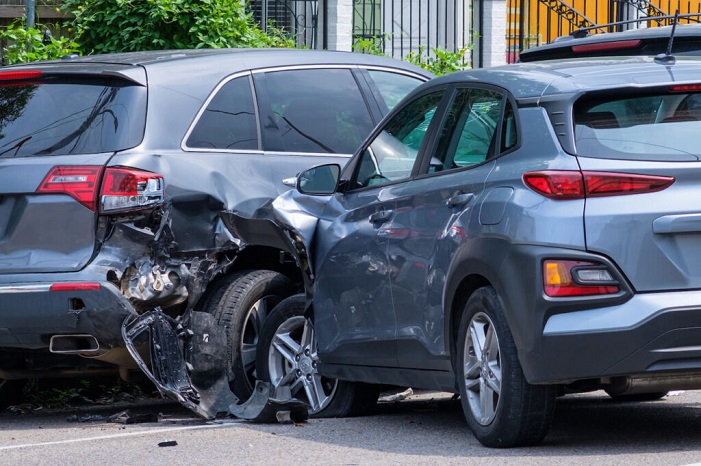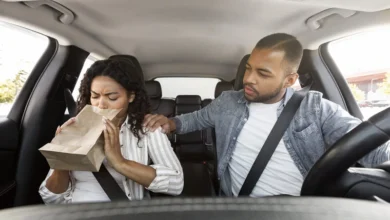Back Injury from a Car Accident: Causes, Symptoms, and How You Can Recover

Back injuries are one of the most common and painful outcomes of car accidents. Whether it’s a minor fender bender or a major collision, the impact can cause serious damage to your spine and muscles. In this article, I’ll share key insights into how back injuries happen during a car accident, common types of injuries, symptoms to watch for, and what steps you can take for treatment and recovery. If you’ve ever experienced a back injury from a car accident, or you know someone who has, this guide is designed to help you understand the process better.
How Does a Car Accident Cause Back Injuries?
Car accidents can lead to back injuries because the human body isn’t built to handle sudden and violent forces. Here’s how accidents can affect your back:
- Whiplash: While often associated with neck pain, whiplash can also strain your upper and lower back. The rapid forward and backward movement causes muscle and ligament damage, which can result in back pain.
- Impact Injuries: In many accidents, your back may absorb a significant amount of the force, especially if the impact comes from the side or rear. This can lead to fractures, herniated discs, or even soft tissue injuries.
- Spinal Compression: The spine can compress under the pressure of an accident, especially if you’re in a seated position and bracing for impact. This compression can result in vertebral fractures or damage to the discs in your spine.
Common Types of Back Injuries After a Car Accident
There are various types of back injuries that can occur after a car accident, ranging from mild to severe. Understanding these injuries can help you recognize the type of damage and seek appropriate treatment:
- Herniated Disc: A herniated or slipped disc occurs when one of the discs between your spinal vertebrae ruptures or slips out of place. This can cause sharp pain, numbness, or tingling in your back, as well as pain radiating down your legs.
- Spinal Fractures: In more severe cases, a car accident can cause the vertebrae in your spine to crack or fracture. This type of injury may require surgery and can lead to long-term issues if not properly treated.
- Muscle Strains and Ligament Sprains: These injuries are common in minor car accidents and occur when the muscles or ligaments in the back are overstretched. While these injuries may heal with time, they can be painful and limit your range of motion.
- Spinal Cord Injuries: In rare and severe cases, the spinal cord may be damaged during the accident, potentially leading to partial or full paralysis. Immediate medical attention is critical for these types of injuries.
Symptoms of a Back Injury After a Car Accident
It’s important to recognize the symptoms of a back injury right after a car accident. Even if you feel fine immediately following the crash, symptoms can develop over time as inflammation sets in and soft tissues become irritated. Here are some signs that you may have a back injury:
- Persistent Back Pain: If you feel sharp, shooting, or stabbing pain in your back, it could be a sign of a herniated disc or muscle strain.
- Numbness or Tingling: Herniated discs can press on nearby nerves, causing a sensation of tingling or numbness in your arms, legs, or lower back.
- Muscle Stiffness: Stiffness and tightness in your back muscles may indicate a strain or sprain, especially if you feel it when moving or stretching.
- Difficulty Moving: If you’re having trouble standing, sitting, or walking after an accident, it could indicate a more severe back injury, such as a fracture or spinal cord damage.
- Weakness in Limbs: Weakness or difficulty lifting or moving your arms or legs might point to nerve damage from a back injury.
Steps to Take If You Suspect a Back Injury
If you’ve been in a car accident and think you’ve injured your back, taking quick action is essential for your recovery. Here’s what you should do:
- Seek Immediate Medical Attention: Don’t wait for the pain to get worse. Get a thorough examination by a doctor, who may recommend X-rays, MRI scans, or other diagnostic tests to assess the damage.
- Follow Your Doctor’s Instructions: Once your injury is diagnosed, follow your doctor’s treatment plan. This may involve rest, medications, physical therapy, or in severe cases, surgery.
- Get Plenty of Rest: Give your body the time it needs to heal. Avoid any activities that could worsen the injury, such as heavy lifting or strenuous exercise.
- Document Everything: Make sure to keep detailed records of your medical appointments, treatments, and symptoms. This information can be crucial if you decide to file an insurance claim or seek legal compensation.
- Consult a Personal Injury Lawyer: If the car accident was caused by another driver’s negligence, you may be entitled to compensation. A personal injury lawyer can help you navigate the legal process and ensure you get the support you need.
Treatment Options for Back Injuries
Recovery from a back injury can take time, and the treatment you receive will depend on the type and severity of the injury. Here are some common treatment options:
- Physical Therapy: Physical therapy is a key part of recovery for many back injuries. A therapist will help you strengthen your back muscles and improve your mobility, while also teaching you exercises that reduce pain.
- Medication: Over-the-counter pain medications like ibuprofen may help reduce inflammation and pain. In more severe cases, your doctor may prescribe stronger pain relievers or muscle relaxants.
- Chiropractic Care: Chiropractors specialize in spinal manipulation and may be able to help with certain types of back injuries, particularly if you’re dealing with alignment issues or joint pain.
- Surgery: For severe cases like spinal fractures or herniated discs, surgery might be required to stabilize the spine or repair damage to the discs. Surgical options may range from minimally invasive procedures to more extensive surgeries, depending on the injury.
Legal and Insurance Considerations for Back Injuries
If you’ve suffered a back injury from a car accident, you may have legal grounds to file a personal injury claim. It’s important to understand your rights, as well as the insurance process. Here are a few tips:
- File a Claim Promptly: After the accident, contact your insurance company and report your injuries. Be sure to provide documentation from your doctor to support your claim.
- Consider Legal Advice: If your injury is serious and you’re facing significant medical bills, consulting with a personal injury attorney may be necessary. They can help you secure compensation for medical expenses, lost wages, and pain and suffering.
- Understand the Statute of Limitations: Each state has a statute of limitations for filing personal injury claims. Make sure you understand how much time you have to file a lawsuit after your accident.
Final Thoughts
Back injuries from car accidents can range from mild strains to severe spinal damage. If you’ve been in a car accident, don’t wait to seek medical attention—early treatment can make a significant difference in your recovery. Pay attention to your symptoms, follow your doctor’s advice, and consult with a personal injury lawyer if you believe you’re entitled to compensation.





